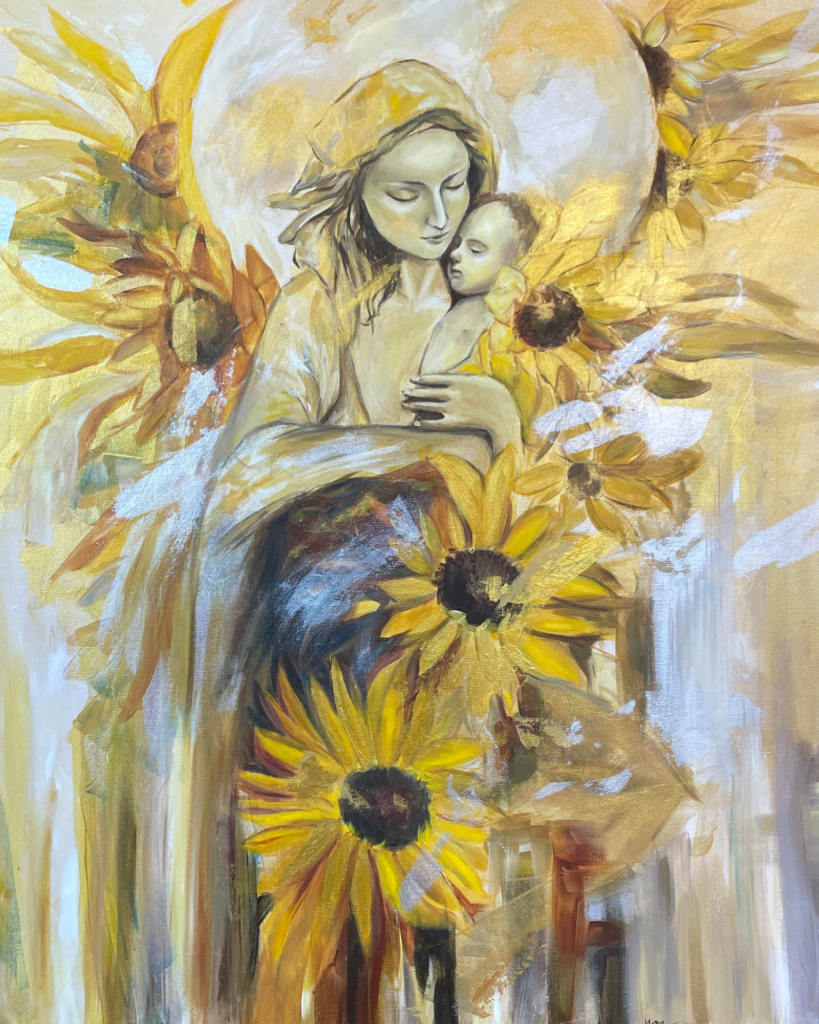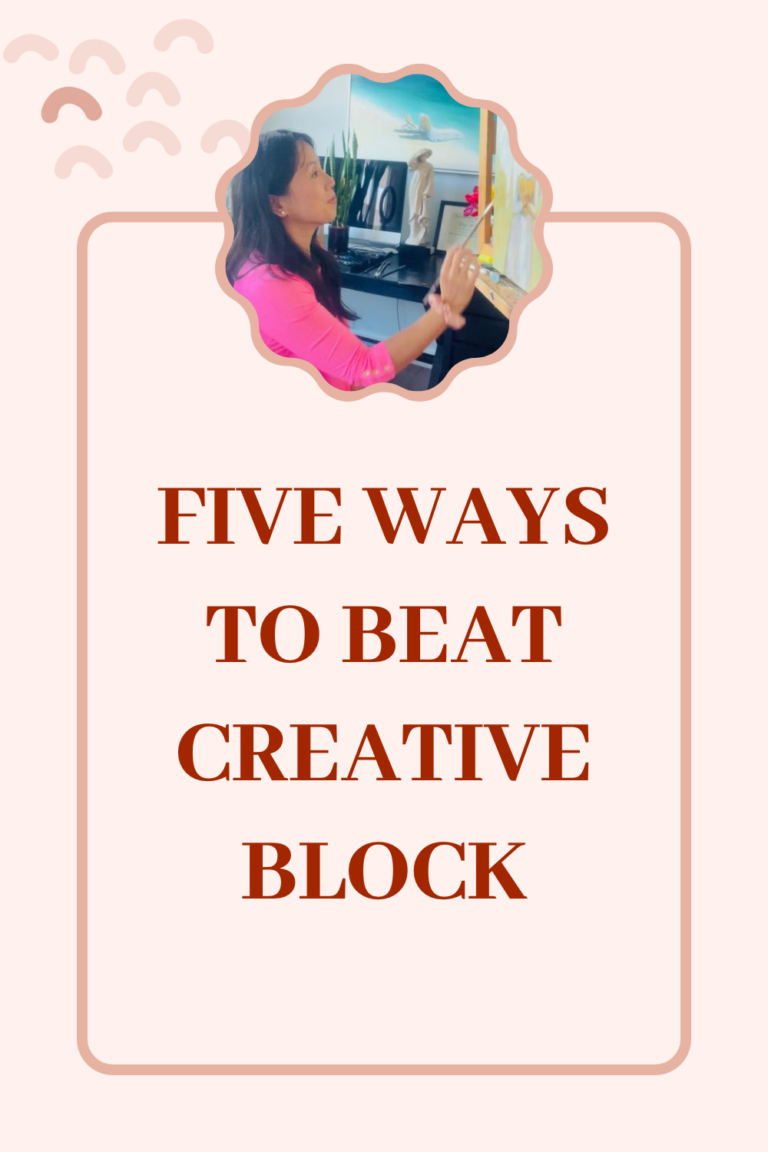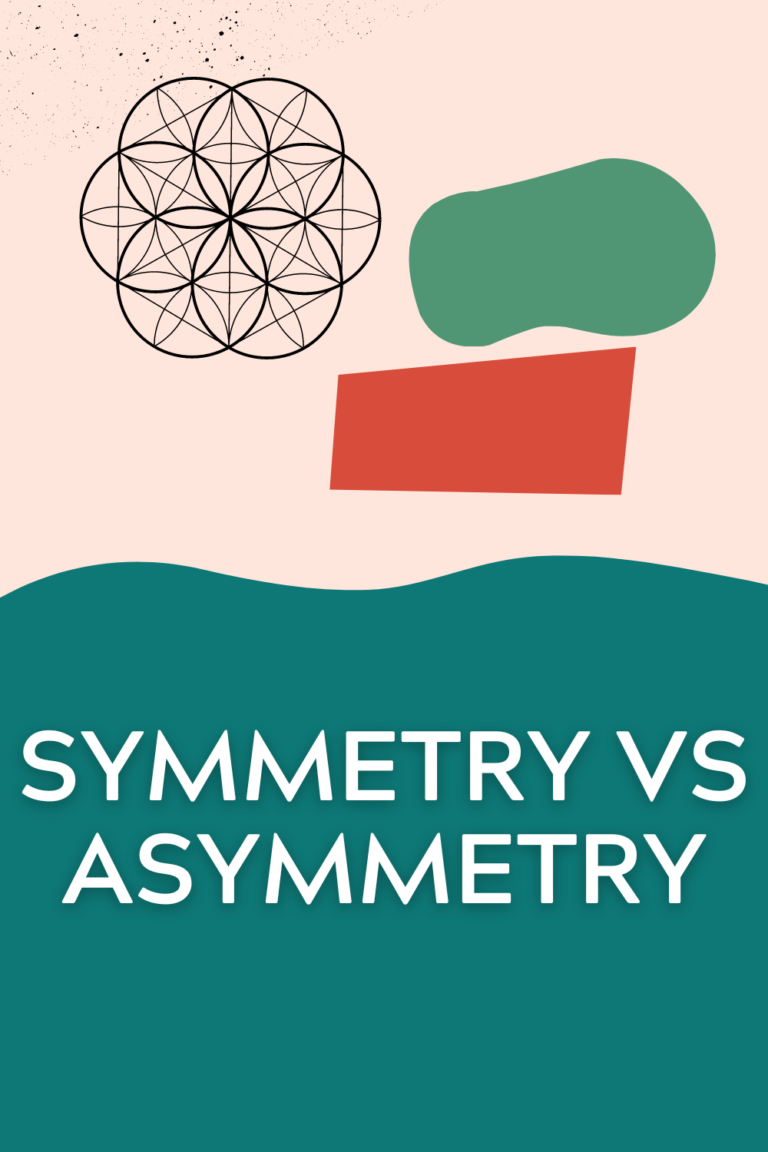How to use emotion to connect your art and your audience
Hey artists!
Today let’s talk about how emotions play a role in creating a painting.
As an artist, I’ve realized that painting is not just about creating an aesthetically pleasing image. It’s also about capturing emotions and feelings that can resonate with the viewer.
In this blog post, I want to share my thoughts on the importance of emotions in painting and how to convey them effectively.
I’m going to use one of my newest paintings as an example (see the picture) – it’s a mother holding her child, with abstract sunflowers in the background, in warm golden and beige colors. This painting has a special place in my heart as it captures the essence of a mother’s love for her child. I wanted to evoke a sense of warmth and comfort, and using warm colors like golden and beige helped me achieve that. The abstract sunflowers in the background add an element of cheerfulness and happiness, and the overall composition of the painting is well-balanced.

But what makes this painting truly special is the emotions it conveys. As I painted this piece, I focused on capturing the deep love and affection that the mother has for her child. I wanted viewers to feel the connection between them, to see the trust and contentment in the child’s face towards the mother. The little details make all the difference – the curve of the mother’s arm around the child, the tilt of the child’s head towards the mother, and the positioning of the sunflowers to create a harmonious backdrop.
To effectively convey emotions in a painting, I’ve found that paying attention to the details is key. In my painting, the subtle details help to capture the nuances of the mother-child relationship, and this is what makes it emotionally resonant and compelling.
As an artist, there are several techniques you can use to convey emotions in your paintings. For example, you can play around with colors to create different moods – warm colors like red, orange, and yellow can create feelings of warmth and happiness, while cool colors like blue and green can create a sense of calmness and tranquility.
You can also experiment with composition, brushwork, and other techniques to create the desired emotional effect.
We, humans, connect with each other through emotion. Emotions are an essential element of painting, and they can be effectively conveyed through the use of colors, composition, and other techniques.
As an artist, I believe that paying attention to the details and being mindful of the emotions you want to capture can help you create paintings that not only look beautiful but also touch the hearts of viewers.




